Search Results
Fine Jewelry University Articles matching: “Natural emerald”
Showing only FJU Article results. Click here to show all results.
Fine Jewelry University (Show All FJU Articles)
-
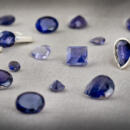
Gem in the Spotlight: Iolite
…violet. Unlike many other popular gems, iolite cannot be heat treated to enhance its color. The color you see is the natural color of the stone when it was first discovered. This adds value to many gem buyers who don’t want a treated …refers to iolite’s pleochroic nature. iolite cannot be heat treated to enhance its color. The color you see is the natural color of the stone when it was first discovered. Coming in at 7 to 7.5 on the Mohs hardness scale, iolite is a …
-
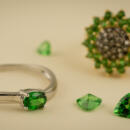
Gem in the Spotlight: Tsavorite Garnet
… in East Africa in the 1960s changed the jewelry world. Here was a gem with the color to rival the most exquisite emeralds and the clarity of the cleanest sapphires, all with the time tested durability of garnet. Tsavorite is a unique form … stones are below two carats. By some estimates, Tsavorite is around 200 times rarer than the much better known Emerald. Gemology Tsavorite’s rarity and beautiful green color reminds one of the other green garnet called Demantoid. Demantoid…
-
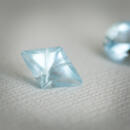
Gem in the Spotlight: Aquamarine
…passed down for generations but this tiara she special ordered from Garrard in 1957. The Gemology of Aquamarine Like emerald, aquamarine is a member of the beryl family (along with morganite, heliodor, and others). Unlike emerald, it is … jewelry, you have come to the right place. At Arden Jewelers, our gemologists understand and appreciate the natural beauty of color gems, and we find mountings that accentuate this beauty to its full extent. You can browse our collection …
-
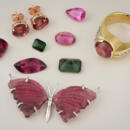
Gem in the Spotlight: Tourmaline
… hundreds of years. But, before the advent of modern gemology, most tourmaline was believed to be ruby, sapphire, or emerald. Gemology of Tourmaline Gemologically speaking, tourmaline is its own mineral and not a species or member of a …was first discovered in 1554 in Brazil when Francisco Spinoza’s expedition confused its vibrant green with that of emerald. Thus began a long trend of confusing tourmaline with other gems. Another notable example of this is the “Caesars Ruby…
-
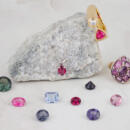
Gem in the Spotlight: Spinel
… by mistake. Since then many processes have been used and perfected to create spinel in even more colors than it is naturally found in. Because of how easily it can be created in a lab, synthetic spinel has been used to imitate many other ….). In fact, the ubiquity of synthetic spinel may be part of the reason why most people have been slow to appreciate natural spinel in its own right. Interestingly, most lab-created spinel has a slightly higher refractive index than natural …
-
The Birthstones
… term: brilliance, hardness, rarity, antiquity, purity and permanence. Learn more about Diamond May’s Birthstone: Emerald A symbol of love and rebirth, the emerald has been treasured for over 4,000 years. The name for the emerald is derived … “smaragdos”, meaning green stone. Spring and green symbolized faith and fertility. The early Christians valued the emerald as a symbol of resurrection. Emerald was believed to have special powers to improve a person’s psychic abilities and …
-
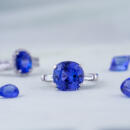
Gem in the Spotlight: Tanzanite
… rarity and dynamic look, tanzanite is still less in price than more commonly known gems like rubies, sapphires, and emeralds. Gemology of Tanzanite Gemologists refer to this gem as blue zoisite. The vast majority (current estimates are … treated to help bring out the vibrant blues. The stones that haven’t been heated by humans were heated through natural effects while they were still underground. Without heating, most tanzanite would be a brown color, similar to smoky …
-
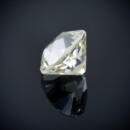
The History of Diamond Cuts
… to change their shape. So, the Romans wore uncut diamonds. One of diamond’s remarkable attributes is that the natural diamond crystal is beautiful without any human modification. Diamonds normally form in the octahedral shape which looks … like two pyramids stuck together at the base. Naturally, the first attempts to enhance diamonds were to polish the natural gem. The “point cut” is the polishing of a natural octahedral diamond. Interesting fact #1 about diamond cuts: …
-
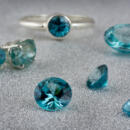
Gem in the Spotlight: Blue Zircon
… the manmade diamond simulates were made, the colorless version of zircon was used in jewelry to mimic diamond. Why? Natural zircon is known for its scintillation, brilliance, and flashes of color or fire just like diamond. Zircon also is … name for colorless Zircon. Starlite is the name for the blue gem variety of Zircon. The color of Starlite is rarely natural, and is almost always heat treated. Of course, the blue form of Zircon is also called, imaginatively, Blue Zircon. …